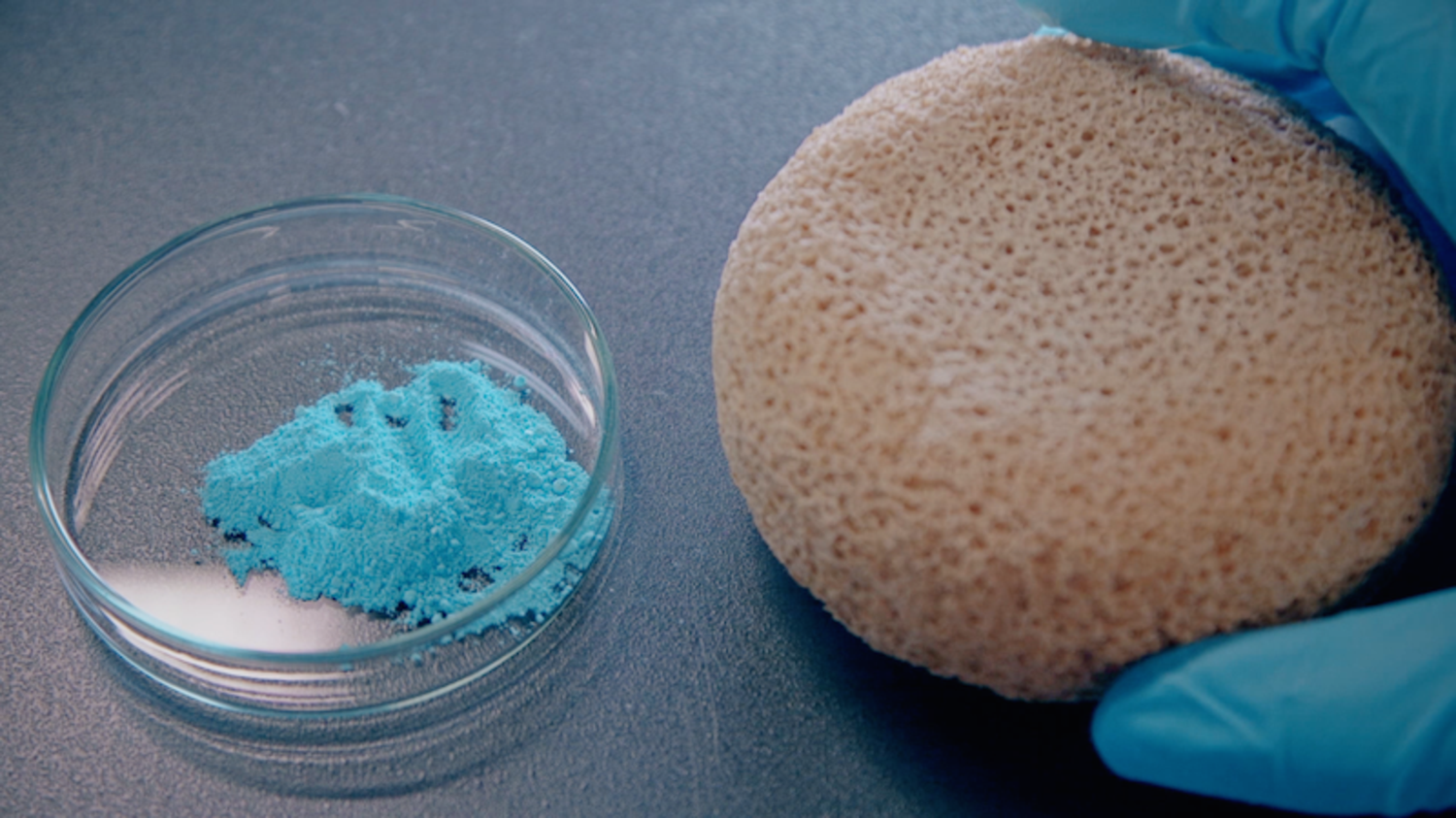A team of researchers at Kyoto University has successfully 3D printed solid structures made of metal-organic frameworks (MOFs). MOFs are a group of materials used for catalysis, gas storage and gas processing due to their adsorbing properties which are a result of their porosity.
By using a modified 3D printer for the controlled deposition of inks made from four different MOFS, the team has proven the viability of 3D printing MOF structures that maintain porosity and relevant mechanical properties.

Robocasting metal-organic frameworks
To date, more than 20,000 different MOFs have been fabricated and characterized. One of the key factors to consider when designing MOFs is the balance between the material’s porosity and its mechanical resistance to the stresses found in the specific application it will be used for.
Jérémy Dhainaut, a former researcher at Kyoto University at the time of this work, stated: “While MOFs are produced as loose powders and tested as such at the laboratory scale, applications generally require easy-to-handle solids with a specific shape and sufficient mechanical robustness to withstand long-term damaging stresses, such as attrition and hydrostatic pressure. In our recent work, we focused on the preparation of MOF-based solids by robocasting with a controlled macroscale morphology and superior textural properties.”
Robocasting was the process used to fabricate the solid MOF structures, whereby a filament of a paste-like material is extruded from a small nozzle, eventually solidifying in the shape of the desired object. The MOF inks were in the presence of low proportions of a binder and a plasticizer to ensure structural integrity.
“This type of robocasting – a microextrusion technique based on the controlled, layer-by-layer deposition of a paste – presents the advantages of giving us perfect control on the size and morphology of the final solid, as well as having a very limited effect on the materials porosity,” explains Dhainaut. “In the presence of a small amount of a cellulose-derived binder, the solids are not only self-standing after drying but they also display a consequent robustness.”
The team used a variety of material characterization techniques to test the structural and textural properties of the 3D printed MOFs, concluding that the robocasting process only slightly negatively impacted these properties. The solids maintained a permanent microporosity that was comparable to the original powders. They also displayed a high compressive strength that was only 1-2 orders of magnitude lower than that of dense binderless pellets. The results are especially impressive when considering that shaped porous powders tend to display a loss of performance in the presence of binders. The binders block the pores and partially collapse the pore network.
“Previous studies have shown that densification techniques used at the industrial scale, when applied to MOFs, lead to an irreversible loss of performance,” explains Dhainaut. “This is not the case when using our robocasting technique.”

What’s next for the team?
The researchers plan to print more viscous pastes as they believe this will improve the final robustness of the 3D printed parts as well as the volumetric uptake. Furthermore, trials with more porous powders will be taking place to increase the gravimetric uptake of the 3D printed parts. High volumetric and gravimetric uptakes have been set by the U.S. Department of Energy as a prerequisite for hydrogen and natural gas vehicles. It is, however, rare to find a material that displays both properties.
Dhainaut concludes: “We believe that our study paves the way to the preparation of highly porous MOF-based solids with designs completely adaptable to their applications: microreactors, adsorbent beds, or separation membranes with specific morphologies, to name a few.”
The study is titled ‘Formulation of Metal–Organic Framework Inks for the 3D Printing of Robust Microporous Solids toward High-Pressure Gas Storage and Separation’. It has been published in the journal ACS Applied Materials & Interfaces.
Due to their natural porosity, MOFs have proven themselves to be valuable in gas separation. Collecting carbon dioxide, in particular, is needed for carbonated drinks, refrigeration and oil recovery. Researchers in Missouri have previously used 3D printing to demonstrate the feasibility of alternative MOF composite filters for carbon dioxide processing. Further work is needed in the field of 3D printed MOFs but preliminary results suggest that gas collection, separation, and storage can all benefit from additive manufacturing techniques.
The nominations for the 2020 3D Printing Industry Awards are now open. Who do you think should make the shortlists for this year’s show? Have your say now.
Subscribe to the 3D Printing Industry newsletter for the latest news in additive manufacturing. You can also stay connected by following us on Twitter and liking us on Facebook.
Looking for a career in additive manufacturing? Visit 3D Printing Jobs for a selection of roles in the industry.
Featured image shows Kyoto University campus. Photo via Kyoto University.


